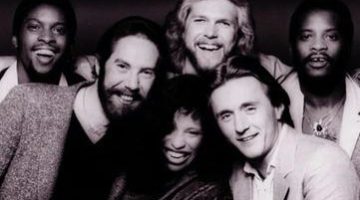
In early 2016, Prince began to embark on what was proposed to be the biggest music book of all time—allowing the legend to capture the narrative of his own life. Much like his preferred avenue of storytelling in songwriting, it wasn’t surprising that he would treat the process of this major project the same way. When announced in March 2016, Prince said, “We’re starting from the beginning, from my first memory, and hopefully we can go all the way up to the Super Bowl.”
Sadly, this sentiment wasn’t completed due to his passing just a month later.
Put together by co-writer Dan Piepenbring, “The Beautiful Ones” gives fans an insight into the project that never came into full fruition. Along with including the few pages Prince already wrote, the book features a conglomerate of multiple unseen photos of the artist’s rise to stardom along with an 11 page handwritten treatment for the film that ended up evolving into 1984’s “Purple Rain”—all in a carefully crafted, meaningful tribute.
The idea of Prince writing a memoir seemed somewhat out of character due to his future centered mindset. His performance style encapsulated this exactly—favoring different interpretations of his many hits instead of presenting them in its meticulous, radio ready format. When asked about his favorite song in his massive catalog, he would usually answer by saying, “the next one”—never wanting to relish too much in his past achievements.
However, at the time, the superstar appeared to be in a more reflective state of mind with his first solo tour “Piano & A Microphone,” which surrounded an intimate atmosphere—giving him the opportunity to share stories about his childhood in between songs including his first formative musical memories.
His sense of openness on stage around this time directly correlates to Piepenbring’s introduction as he tells the story of how he became Prince’s co-writer and journeys the whirlwind of the three months working with him from their first meeting at Paisley Park down to the last phone call days before his passing. Their conversations went through Prince’s criticism toward certain words that were used to describe him by the media as well as his frustration with the recording industry’s treatment of black artists. With these anecdotes, Piepenbring gives readers an insight into Prince’s early visions for the project before transitioning into the star’s own words.
Before the typed story begins, handwritten pages from Prince himself featuring his gorgeous, loopy handwriting are included. Thankfully, the typed up version holds this similar personal factor by keeping his own trademark style of writing often expressed through his many song titles—using “Eye,” “2,” “4” and “U” in true Prince fashion. The presentation is familiarly authentic—ultimately, you can tell that it’s simply him.
The remnants of Prince’s writing narrates his childhood and teenage years in Minneapolis—going over everything from his high school girlfriends to the genesis of his undying love for music. Most of all, he talks about his parents and credits his mother’s eyes and his father’s piano as the things that fueled his vivid imagination, but mainly touches on the effects of their traumatic divorce. In addition to the childhood photos shown throughout, there are interesting little asides and past quotes from Prince. As expected, the abrupt ending leaves a lot of questions unanswered and evokes a swarm of sadness, which is the inescapable downfall to this book.
To fill in Prince’s unfinished section, Piepenbring provides fans with a never before seen mini-scrapbook of Prince during the “For You” era. This picture collection dates from 1977 to 1978 and features many hilarious written captions by Prince himself—showcasing his world before the massive mainstream success to come. Throughout this section, rare snapshots of the “Prince” and “Dirty Mind” era are added in alongside handwritten lyrics from iconic songs “Do Me, Baby” and “Little Red Corvette.”
The “Purple Rain” treatment included in the last portion of the book gives fans a glimpse into the initial vision for his first movie. It is interesting to see how a good portion of his early descriptions of the film not only carries into the final version, but strikes an apparent similarity to certain matters illustrated in the beginning stages of his memoir. The original lyric sheets for songs like “Darling Nikki” and “Let’s Go Crazy” appear to have additional verses that weren’t included in the completed versions, which was another fun surprise.
It’s evident that Piepenbring and those involved with the compilation took their time to make this as respectful as possible for an uncompleted project of this magnitude—the mere fact that they didn’t throw it together during the media frenzy of Prince’s death is admirable in itself. Although it was very well executed in relation to the heartbreaking circumstances, that doesn’t excuse the thoughts of what this memoir could’ve been. It would’ve been incredible to hear his insights on the formation of his significant later work, his battle with Warner Bros. in the ‘90s and everything in between.
If completed on Prince’s terms, “The Beautiful Ones” would’ve been historical—a handbook for aspiring musicians, fans and leaders alike. Above all else, this project gives fans a deeper appreciation for The Purple One, his humble beginnings and how this resulted in his determination to live life authentically through the healing premise of music.
The words Prince sings in the closing track of 1986’s “Parade” album, “Sometimes It Snows In April,” reigns even more true today, “Those kind of cars don’t pass you every day.”
Rylee Jackson can be reached at ryleejackson@sagebrush.unr.edu, or on Twitter @rybyjackson.












